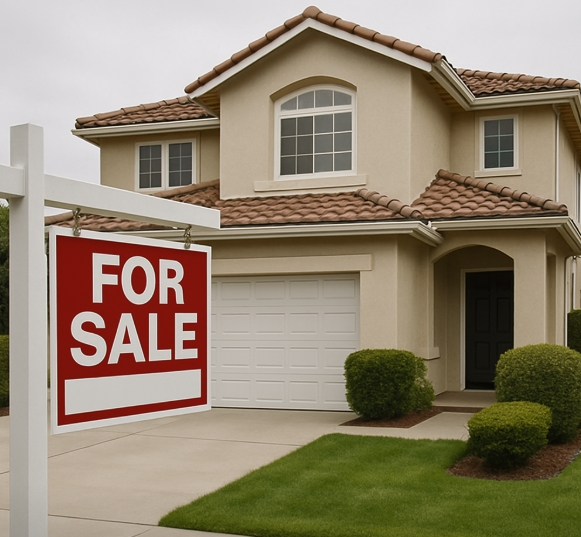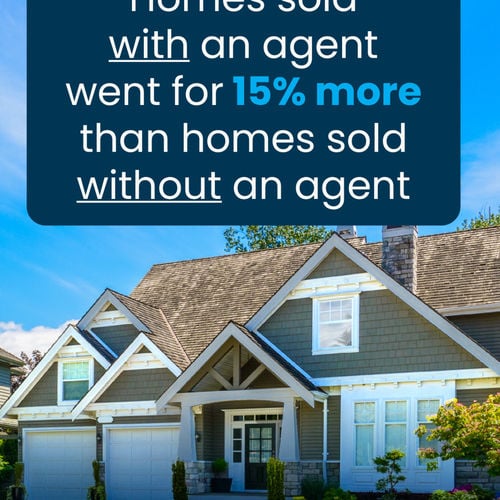Selling a home is one of the biggest financial decisions most people ever make, yet many sellers unintentionally sabotage their results long before the first buyer ever steps foot through the door. Real estate markets shift, buyer expectations evolve, and selling strategies that worked a few years ago often fail today. In a competitive environment, you cannot afford to make avoidable mistakes that cost time, money, and momentum.
Across countless homes and dozens of market cycles, four mistakes consistently appear again and again. Some are rooted in emotion, some in outdated advice, and some in simple misunderstandings about how buyers actually behave. These mistakes can reduce offers, extend days on market, and create stress that could have been completely avoided with the right guidance.
Whether you plan to sell in the next month or the next year, understanding these pitfalls will give you a major advantage. When you avoid them, your home stands out, attracts better buyers, and positions you for a favorable negotiation outcome.
Let’s walk through the four biggest mistakes sellers are making right now and how to avoid them with confidence.
Mistake #1: Overpricing the Home
Why It Happens, Why It Backfires, and How to Price the Right Way
Pricing is the single most important factor in your home sale. Even the best marketing cannot overcome an inflated price. Yet many sellers overprice their homes without realizing how damaging it can be. They assume “we can always come down later,” or “buyers will negotiate anyway,” or “my home is worth more because of sentimental value or what I put into it.”
Unfortunately, buyers think very differently.
Why Sellers Overprice
There are four common reasons sellers list too high:
Emotional attachment
Sellers often associate their home with memories, upgrades, and personal value that buyers cannot quantify.
Relying on outdated comps
Some sellers use sales from a hot market, not the current one. Real estate shifts constantly.
Listening to the wrong advice
Friends, neighbors, relatives, or inexperienced agents may offer numbers with no market research behind them.
Assuming buyers will “just make an offer”
Buyers rarely write offers on overpriced homes. They simply move on to the next one.
Why Overpricing Hurts Your Sale
Many sellers believe starting high gives them room to negotiate. In reality, it usually does the opposite.
You miss your strongest buyer window
The first 7 to 21 days are when your listing gets the most attention. An overpriced home loses the excitement window.
Buyers assume something is wrong
When a home lingers, buyers think it's flawed, even when it is not. They begin looking for reasons not to offer full value.
You push qualified buyers out of your price range
Buyers searching at your true value range may never see your home.
You invite lowball offers
Lingering listings attract bargain hunters and investors expecting a discount.
Price reductions do not erase the history
Buyers see every reduction, and each one weakens your negotiating power.
What Realistic Pricing Actually Looks Like
The strongest pricing strategies reflect:
• Recent sold comparables
• Current inventory
• Buyer demand and absorption rate
• Neighborhood micro-trends
• Seasonality
• Your home’s condition and layout
The goal is not to price the lowest. The goal is to price correctly so buyers perceive value. Well-priced homes generate more showings, more offers, and stronger terms. In many markets, correct pricing leads to competing offers that naturally push the price higher.
A smart list price protects your equity far more effectively than listing high and chasing the market later.
Mistake #2: Not Strategizing the Home’s Presentation
Clean Is Not Enough. Today’s Buyers Need an Experience.
Buyers decide within seconds whether a home “feels right.” The emotional side of home buying is stronger than ever. With online photos and virtual tours driving first impressions, presentation is no longer optional. It is a critical part of the selling strategy.
Yet many sellers believe:
• “My home is clean, so that’s enough.”
• “Buyers can look past clutter.”
• “They can imagine it with their own furniture.”
• “Staging isn’t worth it.”
In reality, buyers cannot easily imagine. And most will not try.
Why Presentation Matters More Than Ever
Today’s buyers are shopping in a highly visual marketplace. They compare homes side by side online before ever booking a showing. If your home looks dark, cluttered, outdated, or poorly arranged, buyers swipe past it instantly.
A beautifully presented home:
• Feels more spacious
• Photographs significantly better
• Creates emotional connection
• Helps buyers imagine living there
• Increases perceived value
• Reduces objections
• Encourages faster offers
The 5 Core Elements of Effective Presentation
1. Decluttering with intention
Decluttering is more than removing personal items. It’s simplifying the space so buyers can focus on the home, not the stuff inside it.
2. Neutralizing the décor
Bold colors, busy patterns, or heavy decorations distract buyers. Neutral backgrounds allow them to imagine their own style.
3. Maximizing lighting
Bright, inviting rooms photograph and show better. Lighting affects emotional tone.
4. Strategic furniture placement
The wrong furniture layout can make rooms look smaller, darker, or awkward. Proper flow is key.
5. Minor updates
Simple changes like fresh paint, new hardware, modern lighting, or updated faucets can add thousands in perceived value.
Why “Staging” Is Not About Decorating
True staging is an intentional process designed to highlight a home’s best features and minimize its flaws. It is not about making the home “pretty.” It is about showing buyers the lifestyle they could have.
Homes that are staged or professionally prepared:
• Sell faster
• Receive higher offers
• Photograph dramatically better
• Appeal to more buyers
• Reduce negotiation pressure
A seller’s pride in their home is important, but presentation must be tailored to what buyers actually want, not what the seller personally prefers.
Mistake #3: Not Having a Solid, Strategic Marketing Plan
The Best Homes Won’t Sell Themselves. Visibility is Everything.
Many sellers assume the MLS and a sign in the yard is enough. But today’s buyers are spread across dozens of platforms, and competition is fierce. Without a strong marketing plan, even the most beautiful homes can slip through the cracks.
Why Sellers Undervalue Marketing
It often comes down to assumptions:
• “The market is strong, so my home will sell itself.”
• “My agent will take care of it.”
• “How much difference can marketing really make?”
The truth is that marketing determines who sees your home, how many buyers schedule showings, and how desirable your home appears compared to the competition.
What a Strong Marketing Plan Includes
1. High-quality professional photography
Blurry phone photos kill buyer interest instantly. High-end photos capture lighting, angles, and depth the right way.
2. Drone photography and aerial storytelling
Buyers want context. Aerial photos help them understand the neighborhood, lot layout, and overall appeal.
3. Strategic listing copy
Well-written descriptions highlight lifestyle, not just features.
4. Widespread platform exposure
Buyers search on:
• Zillow
• Realtor.com
• Redfin
• Homes.com
• Social media
• Google
• AI-driven search platforms
Your listing must appear everywhere buyers are looking today.
5. Paid social media ads
Organic social media is not enough. Paid ads target relocation buyers, investor groups, and niche audiences.
6. Listing videos
Video tours dramatically increase time-on-page and engage buyers emotionally.
7. Neighborhood marketing
Just listed mailers, digital ads, and local outreach attract nearby homeowners who may have friends or family looking.
8. Agent-to-agent communication
The best agents promote listings aggressively to their database, not just consumers.
Why Marketing Matters Even in a “Strong Market”
Strong markets create competition—but also high buyer expectations. Homes that stand out visually receive more showings, which leads to more offers, which leads to stronger negotiation leverage.
Marketing is not a luxury. It is an essential component of selling at the highest price.
Mistake #4: Hiring the Wrong Listing Agent
Friends, Relatives, and Discount Agents Often Cost Sellers Thousands
One of the most impactful decisions a seller makes is choosing who will represent them. Yet this is the area where sellers often choose based on emotion or convenience instead of experience.
The Three Costly Agent Choices
1. Hiring a friend
A friend may care deeply about you, but that does not make them an expert negotiator, marketer, or pricing strategist.
2. Hiring a relative
Family relationships can complicate business decisions. Many sellers feel uncomfortable expressing concerns or dissatisfaction when working with a relative.
3. Hiring a discount agent
Discount agents reduce fees because they reduce service. That often means:
• No staging support
• No high-end photography
• Minimal marketing
• Limited communication
• Poor negotiation skills
• No strategy
Sellers assume they are saving money, but in reality, they often lose far more than they save.
Why the Wrong Agent Hurts Your Sale
Weak pricing guidance
The wrong agent may tell you what you want to hear to win the listing rather than what you need to hear to succeed.
Poor negotiation skills
Negotiation is an art form. Experience is everything.
Limited marketing
A weak agent cannot position your home competitively.
Poor buyer screening
Serious buyers separate from casual ones quickly. The wrong agent may waste your time or accept risks you were not prepared for.
Lack of strategy
A strong agent tailors a plan for:
• Timing
• Pricing
• Presentation
• Marketing
• Showing strategy
• Market shifts
• Offer deadlines
• Counter-offer tactics
A weak agent simply lists and hopes for the best.
The listing agent you choose will influence your selling price, timeline, stress level, and overall experience. It is not a decision to take lightly.
The Financial Impact of These Four Mistakes
The Real Cost to Sellers
Each mistake—overpricing, poor presentation, weak marketing, and hiring the wrong agent—creates measurable financial consequences.
Overpricing
Often results in:
• Longer days on market
• Price reductions
• Lower final selling price than if priced correctly from the start
Poor presentation
Results in:
• Reduced buyer interest
• Fewer showings
• Lower perceived value
Weak marketing
Leads to:
• Minimal exposure
• Fewer offers
• Greater negotiation pressure
Hiring the wrong agent
Can result in:
• Missed opportunities
• Weak strategy
• Stress
• Legal risks
• Lost equity
All four mistakes compound each other. When sellers avoid these pitfalls, their results improve dramatically.
How to Avoid These Four Mistakes
A Proven Roadmap for Home Selling Success
Step 1: Price your home based on data
Use a pricing strategy built on current market behavior.
Step 2: Prepare your home with intention
Presentation must appeal to today's buyers visually and emotionally.
Step 3: Demand a real marketing plan
Your agent should be able to show you exactly how they will promote your home.
Step 4: Hire the right listing agent
Experience, communication, and negotiation skills matter more than convenience.
Final Thoughts: The Sellers Who Win Are the Sellers Who Prepare
A successful home sale is never an accident. It is the result of preparation, strategy, professional presentation, and guidance from the right listing agent. When you avoid the four biggest mistakes—overpricing, poor presentation, weak marketing, and hiring the wrong agent—you protect your equity and position yourself for the smoothest possible sale.
Selling your home does not have to be stressful. With the right plan and the right team, you can move forward confidently and achieve the results you deserve.
Ready to Sell? The Svelling Group Is Here to Help
If you want clear guidance, strong strategy, white glove service, and professional representation, The Svelling Group is here to support your next move. From pricing to staging to negotiation, you will have experts advocating for you every step of the way.



